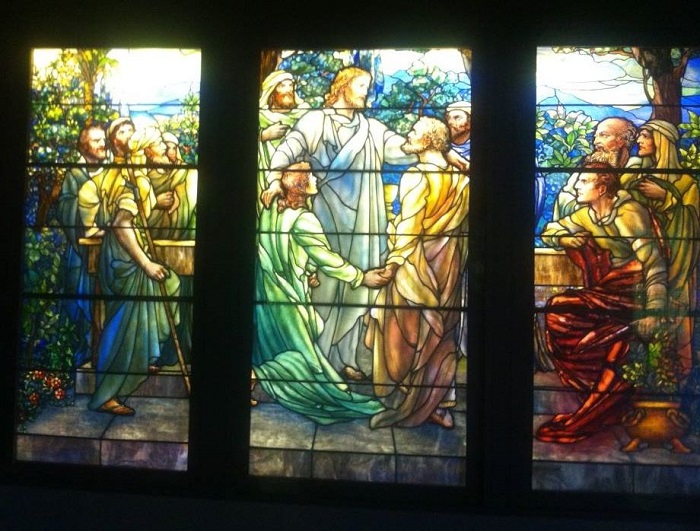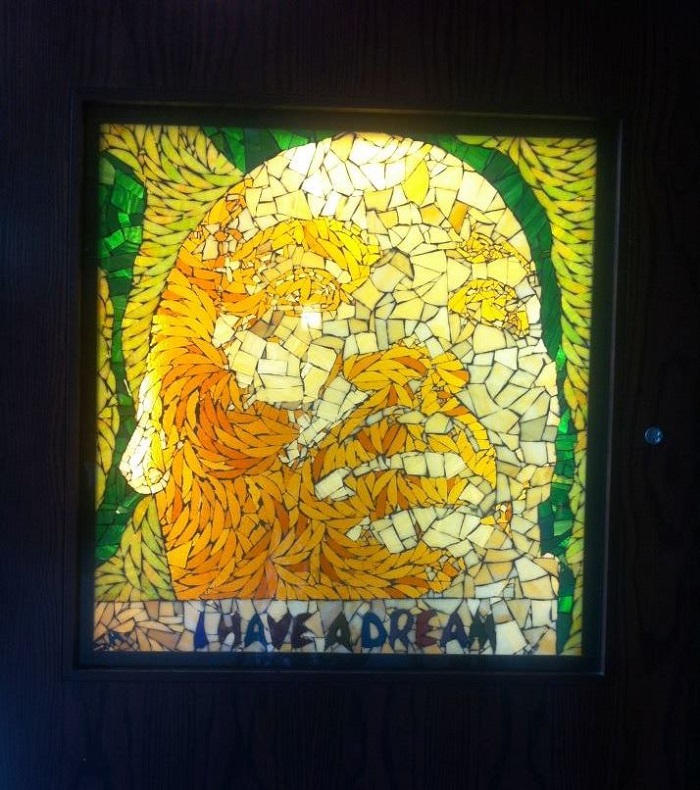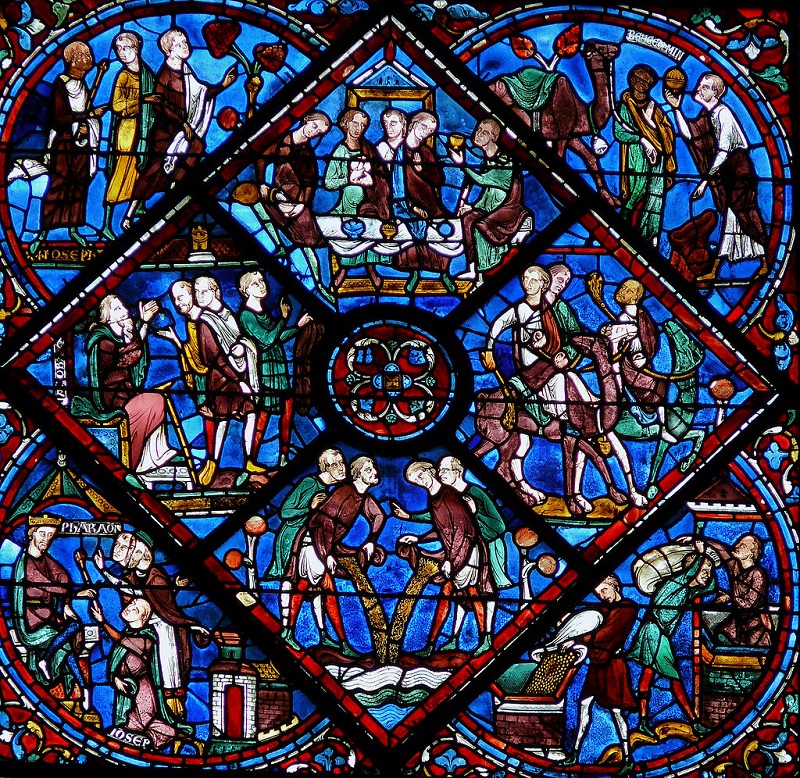
While the designs have become more elaborate, the manufacturing of stained glass windows has remained relatively the same throughout its history. We go beyond the beauty of the art form and dive into the science behind its production.
Exploring the Stained Glass Art Form
Stained glass has always been a form of art that I have found to be interesting. Anytime I pass a building or church featuring a stained glass window, I always find myself gravitating towards it. While living in Chicago, I had the opportunity to visit the Smith Museum of Stained Glass Windows. Recognized as the first American museum dedicated solely to the art of stained glass windows, it featured a variety of stained glass works, from religious scenes to more contemporary pieces, as illustrated below.


More recently, I explored the Mapparium at The Mary Eddy Baker Library here in Boston. Designed by Chester Lindsay Churchill, this three-story stained glass globe was built in 1935 and offers a unique view of the world, as countries can be seen in accurate geographical relation to one another. While on this tour, there was another interesting element of physics that I noted — the acoustics within the room. Because of the shape of the room and the material with which it was constructed, the room took on interesting sound effects. One of these effects was the whispering gallery, where people at opposite ends of the room can talk and hear the other person as if they are standing next them.
Following these experiences, I felt inspired to learn more about the history of stained glass as well as how it is produced.
Combining Beauty with Utility
Featuring an array of colors and intricate designs, stained glass artistry is a type of art that is captivating to the eye. Both an art and a craft, the creation of these illuminating decorations requires artistic abilities as well as the engineering skills for assembling the pieces.
When stained glass first began to flourish in the 12th century — in correlation with the rise of the Gothic cathedral — the windows were used extensively in cathedrals and churches. Along with adding beauty to the structure, the stained glass windows of this time were also recognized as an educational resource, illustrating Bible narratives to a populace that was largely illiterate.

A stained glass window from the 13th century. (“13th-century window from Chartres showing extensive use of the ubiquitous cobalt blue with green and purple-brown glass, details of amber and borders of flashed red glass” by MOSSOT — Own work. Licensed under Creative Commons Attribution Share-Alike 3.0, via Wikimedia Commons).
As the architecture of the age became more ornate, the stained glass also followed suit, with windows becoming larger and more elaborate. While the development of stained glass halted during the Renaissance period, later revivals of this art form were prompted by a renewed interest in the medieval church and the rediscovery of medieval principles for designing and working glass. This revived interest heightened the demand once again for stained glass art.
Now that we’ve reflected on its history, let’s explore how stained glass is developed.
From Materials to Manufacturing: The Production Process
We can first focus our attention on the production of the glass. In the Medieval age, glass factories were established that featured a supply of silica. To become molten, this material requires an extremely high heat. Materials like lead were added to lower the melting temperature, and substances such as lime were added to stabilize the glass.
While the glass is still molten, metallic oxide powders are added to the mixture to create various colors. For example, cobalt often produces shades of blue, chromium and iron oxide can be used to create shades of green, and gold results in ruby colored glass.
When mixing the gold chloride with the molten glass to produce this red stain, these artists in a way became nanotechnologists. The mixture created tiny gold spheres, which absorbed and reflected sunlight in such a manner that resulted in the deep red color. For a closer look at how light scatters off of a gold nanosphere, see this model.
When it comes to the next step, there are several different approaches for handling this molten glass. Let’s first discuss the two types used to create ancient stained glass windows: muff glass (or “hand-blown” cylinder) and crown glass.
In the muff glass type, a blow-pipe is used to take a glob of molten glass from the pot heating in the furnace. Once formed into the proper shape, an air bubble is blown into the molten glass. Metal tools are then used to mold the glob into a long, cylindrical shape — a process that is repeated after the molten glass is reheated. Within this process, the cylinder’s bottom is removed and, after achieving the desired shape, the molten glass is left to cool. After opening one side of the cylinder, the glass is placed in a different oven, heated and flattened, and then cooled in an annealer.
Meanwhile, the crown glass method involves blowing an air bubble into a glob of molten glass. The glob is then spun by hand or on a table that operates similar to a pottery wheel. Due to the force of the rapid revolution, the molten bubble opens up and flattens, and the glass can then be cut into small sheets. While still used in production today, this hand-blown glass type is not used to create stained glass on a large scale.
A more modern approach to glass production is rolled glass. Here, molten glass is poured onto a metal or graphite table. The glass is then rolled into a sheet with a large metal cylinder — which can be accomplished by hand or machine — and annealed. First used commercially around the mid-1830s, this production type continues to be widely used today.
Creating the Window
This then leads us to the design of the window pattern. As in the past, an artist creates a smaller scale model of the final design. In Medieval times, this drawing was added directly to a whitewashed table’s surface, serving as a pattern for cutting, painting, and putting together the window. Divided into a patchwork, this small-scale design acts as a template for the location of each glass piece within the window’s pattern.
Once the design is created, the various colored glass pieces are cut to match their selected section. Over the years, several types of paints and stains have been developed to further enhance the stained glass designs. For example, a silver nitrate stain producing a yellowing effect has helped to enhance borders and haloes. A stain called Cousin’s rose was also developed, enabling artists to enhance individuals’ flesh tones.
As a final step, the window pieces are slotted into lead — in more modern times, copper foil — divider bars referred to as cames. The joints are then soldered together and an oily cement is inserted between the glass and the dividers to ensure stability and reduce any potential rattling.




Comments (0)